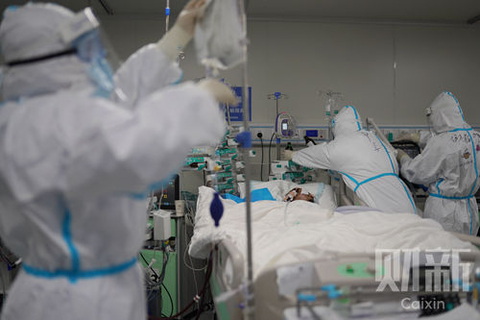
Author | Arturo Casadevall LIISE-Anne Pirofski originally contained in Johns Hopkins Hospital (WeChat: HopkinsMedicine)
In each global epidemic, some people die, some people are sick and then recover, and the most lucky people can heal without obvious symptoms after infection.In the current popular COVID-19, these situations happen to us every day.
Although the initial epidemiological data shows that COVID-19 performed more seriously among people with diseases such as heart disease and lung diseases, but not all patients with severe patients have more or less.Dangerous factors.At the same time, not every patient with critical illnesses has gone through the same clinical manifestations, prognosis or return.
Why do people show this difference?Why can't we predict the possibility of each individual disease?In order to solve this complex problem, the first step is to correctly understand the professional terms we use.Infection refers to obtaining it after contacting the coronary virus.Infection is not synonymous with exposure or illness.The disease is a clinical state related to cough, fever and other symptoms, and the range can be raised from light to heavy.These symptoms come from damage to the tissue and immune system.When the body's damage is severe enough to maintain oxygen in the blood and other necessary functions, death will occur.
In the past epidemic diseases, human beings eventually attributed death to life or wealth.With the help of modern medicine and science, we can better understand why the infection can lead to such different results.Among the individuals of the same risk group (like one age group), the differences in the result of the infection may be caused by the five different variables outside the control range.
The first is the dose or inoculation of microorganisms, that is, the number of virus particles that cause infection.The human defense system can relatively effectively fight a small amount of virus particles.Second, infection may not cause any symptoms or only cause mild disease.On the contrary, a large number of particles can cause the virus growth to accelerate, to make the immune system overwhelmed, and lead to severe diseases.
Genetic factors may also affect the degree of susceptibility to severe infection.Viruses usually enter host cells through surface proteins, and the existence and nature of surface protein varies from person to person.People without this surface protein may have innate resistance to infection.Taking HIV (HIV) as an example, some people lack the receptor required for virus infections, so they are not sensitive to the virus.
The third variable that affects the infection results is where the virus enters the human body.The virus inhaled with a atomized liquid droplets and the virus obtained by contacting the surface of the contaminated surface and then contacting the person's face may trigger different immune defense.The local defense mechanism of the nose and lungs is different, so the pathway can significantly affect the ending.
The fourth variable is the strength of the coronary virus itself.The virus's toxicity is strong and weak mdash; mdash; that is, their ability to destroy the host or immune is different mdash; mdash; even if they are the same genus.This is why the severity of the influenza season is not the same every year.Virus classification of viruses such as coronary virus depends on small genetic fragments and how these fragments affect the interaction between the virus and human host.As coronary viruses spread between people, it may go through the unique changes in its genetic structure, thereby enhancing or weakening its damage ability.A more toxic virus strain may cause more serious diseases.
In the end, human self -immune state, especially the history of the past infectious infection, determines the response to new infections.The immune system will remember the contact with microorganisms in the past, which will affect its resistance and response to new microorganisms.For example, dengue fever, infected with one type of virus can make the individual more likely to infect another type of similar virus.In other infectious diseases, a recent history of virus infection may affect the sensitivity to a new infection that has nothing to do with it.For example, if the Corporal Virus is infected with influenza, the course of COVID-19 may be changed, and it is quite difficult to predict.When a person's immune system does not remember the pathogen, it may not be able to respond quickly, which may cause immune escape from the invasive pathogen, thereby creating more time to cause damage to the body.
These variables together form a complex picture.The number of viruses, our genes, the pathway of infection, the type of virus, and the history of our immune history lead to various endings from asymptomatic to death.At the same time, because these parameters between infections are very different, it is almost impossible for who is alive and who will die.Therefore, although more and more evidence shows that most people infected by coronary viruses will not develop into severe illnesses, we cannot determine who is in a high-risk state, which exacerbates panic caused by COVID-19.
In some ways, today's situation is very similar to the popularity that has appeared in the past. In those big popularity, who can survive and who will die is difficult to predict. In the endEssenceHowever, COVID-19 has a huge difference in influenza in 1918. Today we have strong scientific institutions that can quickly analyze what is happening and help us find the best solution to prevent and treat infection.
Science is a human life line.In the future, medical workers, scientists, epidemiologists, and various positions will work hard to understand the susceptibility distribution of coronary viruses.COVID-19 will teach us a lot of new scientific knowledge, which will prepare for us for the next outbreak.


